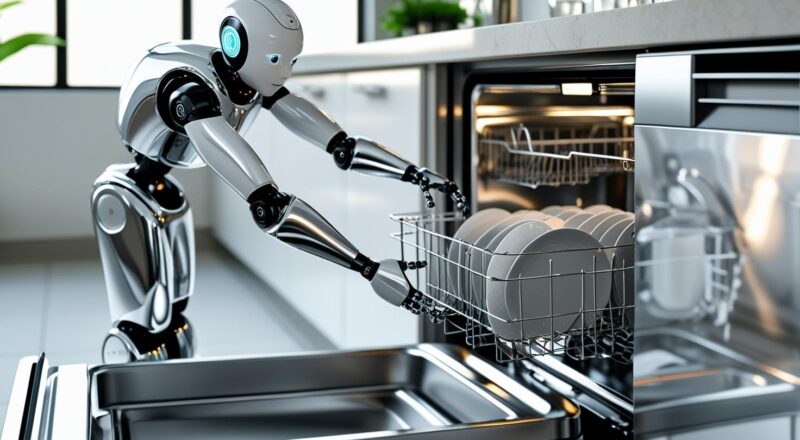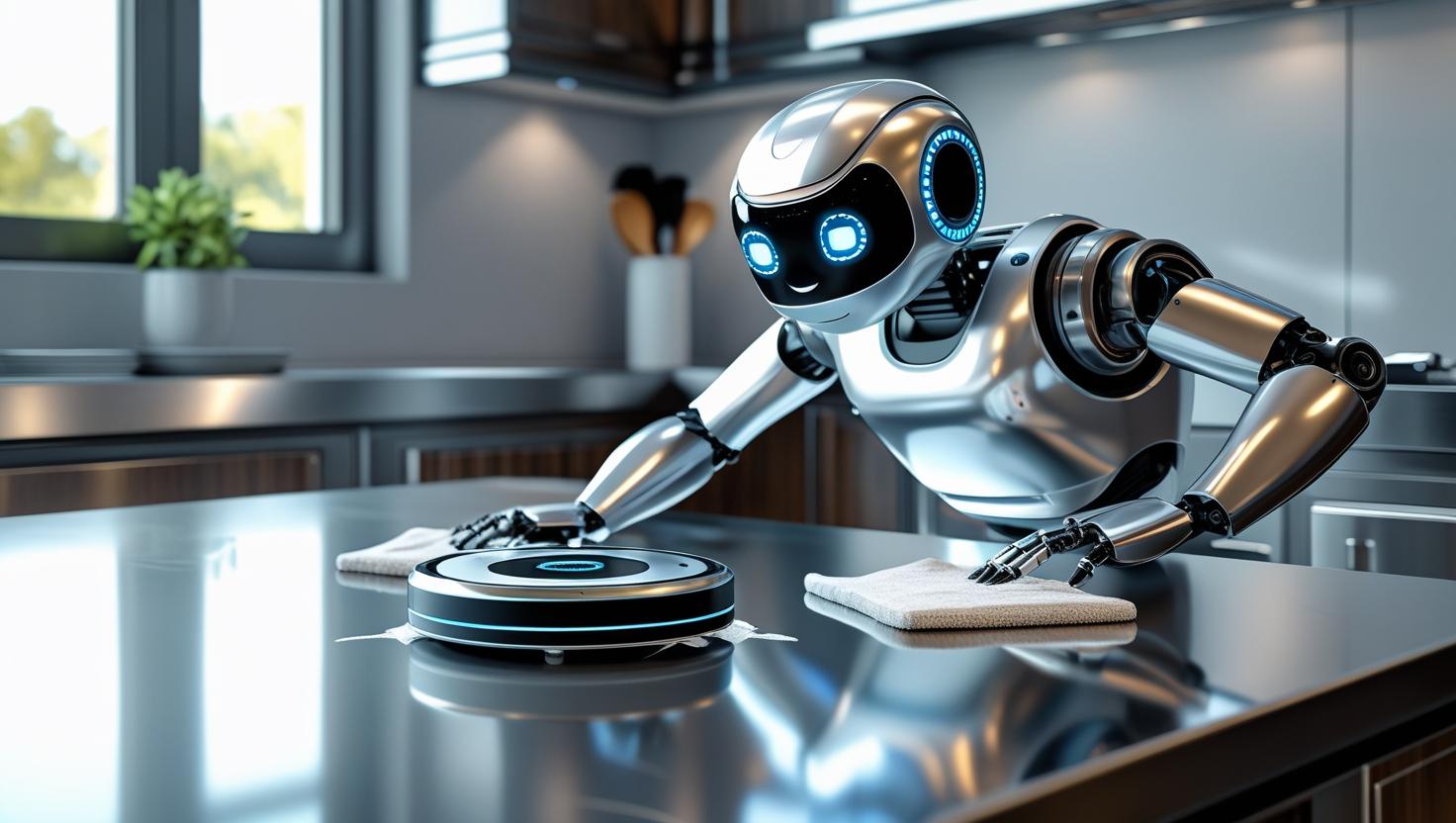The kitchen, once a domain exclusively for human chefs and home cooks, is rapidly embracing the age of automation. While we’ve seen robots slicing, dicing, and flipping burgers for some time, the recent advancements in artificial intelligence, sensor technology, and robotics are enabling more sophisticated and specialized applications. This blog post dives into two compelling, relatively new applications of kitchen robots that are moving beyond simple tasks and promising to revolutionize how we approach food production and consumption.
1. Personalized Nutrition Through Automated Micro-Cultivation and Cooking
One of the most exciting frontiers in kitchen robotics lies in the intersection of personalized nutrition and automated food production. Imagine a system that not only prepares your meals but also cultivates specific ingredients tailored to your individual dietary needs and preferences. This is becoming a reality with emerging robotic micro-cultivation and integrated cooking systems. A few companies are beginning to experiment with combining hydroponic growth systems and robot arms to grow and prepare dishes based on nutritional profiles input by the user. This is beyond smart appliances, this is almost fully automated and individualized food production in the kitchen.
The Technology:
- Modular Micro-Gardens: These systems consist of compact, automated hydroponic units that can grow a variety of herbs, leafy greens, and even small vegetables. Sensors continuously monitor environmental conditions such as temperature, humidity, and nutrient levels, adjusting them as needed to optimize plant growth.
- AI-Powered Recipe Generation: Sophisticated algorithms analyze the user’s dietary requirements (e.g., allergies, caloric needs, macronutrient ratios) and generate recipes using the available ingredients. The user can also input taste preferences.
- Robotic Harvesting and Preparation: A robotic arm equipped with advanced vision and grasping capabilities carefully harvests the ripened ingredients. It can then wash, chop, and prepare them for cooking.
- Automated Cooking: Integrated cooking modules, such as robotic woks or programmable ovens, follow the recipe instructions to prepare the dish to perfection.
The Application:
Consider someone with specific dietary restrictions, such as a gluten intolerance or a need to maintain a low-sodium diet. Traditional meal planning and preparation can be time-consuming and challenging. With a robotic micro-cultivation and cooking system, this individual could input their dietary needs into the system. The system would then cultivate the appropriate ingredients, generate recipes that meet those needs, and automatically prepare delicious and nutritious meals. This is not just about convenience; it’s about empowering individuals to take control of their health through personalized nutrition.
Examples of Companies: While there aren’t fully realized products on the market (as of late 2024), companies are working on different modules to accomplish personalized automated food production in the kitchen. These include companies experimenting with robotic arms for harvesting and preparation combined with IoT enabled hydroponic gardens.
Future Implications: This technology has the potential to revolutionize personalized nutrition and food security. It could enable individuals to grow and prepare their own food, reducing their reliance on traditional food supply chains. It could also be used in healthcare settings to provide patients with customized meals tailored to their specific medical needs.
2. Robotic Chefs for Dynamic Menu Creation and Restaurant Automation
While some kitchen robots focus on basic tasks, a new generation of robotic chefs is emerging that can handle complex culinary operations, including dynamic menu creation and restaurant automation. These robots are not just programmed to execute a set of pre-defined recipes; they can learn from data, adapt to changing conditions, and even create new dishes on the fly.
The Technology:
- AI-Powered Recipe Generation: These algorithms analyze vast datasets of recipes, ingredient combinations, and customer preferences to generate new and innovative dishes. They can also learn from chef demonstrations and adjust recipes based on feedback.
- Advanced Sensor Systems: Robots are equipped with sensors that can detect the texture, color, and aroma of ingredients. This allows them to make real-time adjustments to cooking parameters, such as temperature and cooking time.
- Dexterous Manipulation: Sophisticated robotic arms and grippers allow robots to handle a wide range of ingredients and perform complex tasks, such as flipping pancakes, garnishing plates, and plating dishes.
- Real-time Inventory Management: Integrated inventory management systems track the availability of ingredients and automatically adjust recipes based on what’s in stock.
The Application:
Imagine a restaurant where the menu is constantly evolving based on customer preferences, seasonal ingredients, and the chef’s creative inspiration. With a robotic chef, this is not just a pipe dream; it’s a practical reality. The robot can analyze data from online ordering platforms, social media, and customer surveys to identify trending flavors and ingredients. It can then use this information to generate new recipes that are tailored to the restaurant’s clientele.
Furthermore, these robotic chefs can automate many of the repetitive and time-consuming tasks involved in food preparation, freeing up human chefs to focus on more creative and strategic aspects of the business. This can lead to increased efficiency, reduced labor costs, and improved consistency.
Examples of Companies: Several startups are developing robotic chefs with the capabilities for dynamic menu creation. These robots are often trained on vast datasets of recipes and customer preferences, allowing them to generate new dishes that are both innovative and appealing. Some robotic chefs focus on automating entire restaurant operations, from order taking to food preparation to delivery.
Future Implications: The rise of robotic chefs is likely to have a profound impact on the restaurant industry. It could lead to increased efficiency, reduced costs, and more personalized dining experiences. It could also democratize access to culinary innovation, allowing smaller restaurants to compete with larger chains. This does however raise questions concerning the role and employment of human chefs.
Conclusion
The two applications highlighted above represent just a glimpse of the transformative potential of kitchen robots. As the technology continues to evolve, we can expect to see even more innovative and sophisticated applications emerge, further blurring the lines between the kitchen and the laboratory. While challenges remain, such as cost, complexity, and safety concerns, the long-term benefits of kitchen automation are undeniable. From personalized nutrition to dynamic menu creation, kitchen robots are poised to revolutionize how we approach food production and consumption.
The advancements in kitchen robots are not about replacing human chefs but about augmenting their abilities, allowing them to focus on creativity and innovation while robots handle the mundane and repetitive tasks. It is about creating a more efficient, sustainable, and personalized food system for the future.


